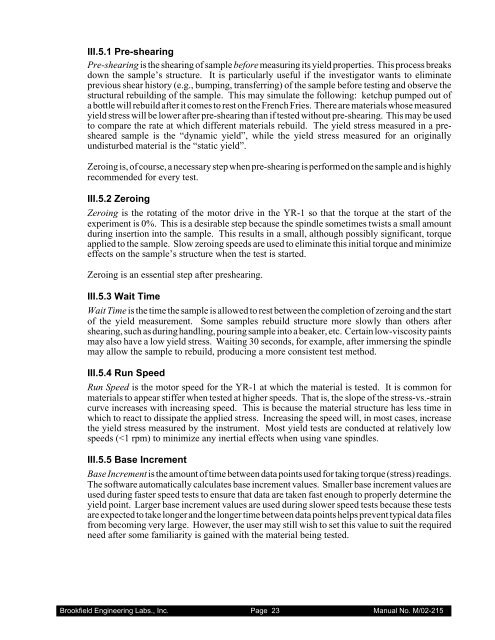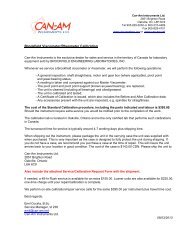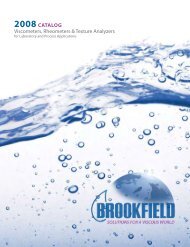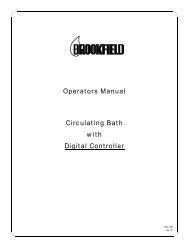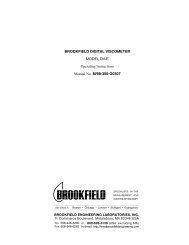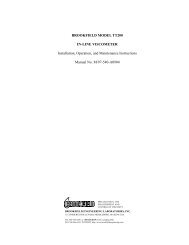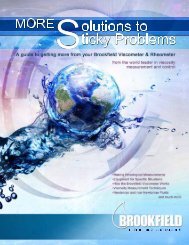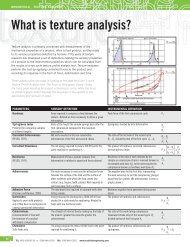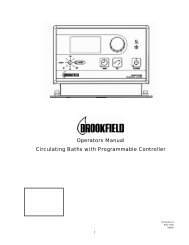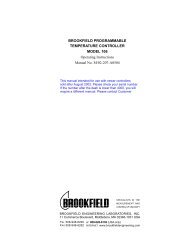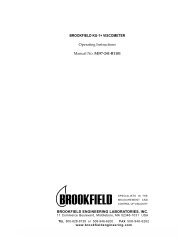BROOKFIELD YR-1 RHEOMETER Operating Instructions Manual ...
BROOKFIELD YR-1 RHEOMETER Operating Instructions Manual ...
BROOKFIELD YR-1 RHEOMETER Operating Instructions Manual ...
Create successful ePaper yourself
Turn your PDF publications into a flip-book with our unique Google optimized e-Paper software.
III.5.1 Pre-shearingPre-shearing is the shearing of sample before measuring its yield properties. This process breaksdown the sample’s structure. It is particularly useful if the investigator wants to eliminateprevious shear history (e.g., bumping, transferring) of the sample before testing and observe thestructural rebuilding of the sample. This may simulate the following: ketchup pumped out ofa bottle will rebuild after it comes to rest on the French Fries. There are materials whose measuredyield stress will be lower after pre-shearing than if tested without pre-shearing. This may be usedto compare the rate at which different materials rebuild. The yield stress measured in a preshearedsample is the “dynamic yield”, while the yield stress measured for an originallyundisturbed material is the “static yield”.Zeroing is, of course, a necessary step when pre-shearing is performed on the sample and is highlyrecommended for every test.III.5.2 ZeroingZeroing is the rotating of the motor drive in the <strong>YR</strong>-1 so that the torque at the start of theexperiment is 0%. This is a desirable step because the spindle sometimes twists a small amountduring insertion into the sample. This results in a small, although possibly significant, torqueapplied to the sample. Slow zeroing speeds are used to eliminate this initial torque and minimizeeffects on the sample’s structure when the test is started.Zeroing is an essential step after preshearing.III.5.3 Wait TimeWait Time is the time the sample is allowed to rest between the completion of zeroing and the startof the yield measurement. Some samples rebuild structure more slowly than others aftershearing, such as during handling, pouring sample into a beaker, etc. Certain low-viscosity paintsmay also have a low yield stress. Waiting 30 seconds, for example, after immersing the spindlemay allow the sample to rebuild, producing a more consistent test method.III.5.4 Run SpeedRun Speed is the motor speed for the <strong>YR</strong>-1 at which the material is tested. It is common formaterials to appear stiffer when tested at higher speeds. That is, the slope of the stress-vs.-straincurve increases with increasing speed. This is because the material structure has less time inwhich to react to dissipate the applied stress. Increasing the speed will, in most cases, increasethe yield stress measured by the instrument. Most yield tests are conducted at relatively lowspeeds (


